I have already attended John Sexton’s world-renowned The Expressive Black and White Print Workshop in 2011 (read about it here). That single workshop has changed — for better! — my photography more than the thirty years of prior experience put together. Most of the improvement took place in the months that followed that workshop, as I was changing my habits, simplifying the way I print, removing unnecessary equipment, and putting in place a few new techniques. Eventually, I felt ready to have my skills re-assessed again, and to take them to the next level. I have signed up for Fine Tuning the Expressive Print Workshop, which I took in April 2013.
John Sexton has been teaching photography for over 30 years, and it is clear that he not only knows how to educate, but also how to attend to each of his students needs in a very effective way. In a matter of five long days, each starting at 8:20 AM, and often ending close to 10:30 PM, every one of the nine attendees, Denise, Gail, Jackie, Ken, Mike, Rex, Stephanie, Steve, and I, have received so much in terms of personal photographic education that it almost felt like attending intense one-on-one trainings with two instructors at the same time. Two, because John was being assisted by his wife, Anne Larsen, a perfectionist in finish and print presentation, and accomplished photographer whose work oozes subtlety, peace, and delicate human warmth.
The workshop opens with a review of prints made by each of the attendees from one of John’s negatives. Those prints are evaluated anonymously, and a couple of additional ones, from prior workshops, are thrown into the set to add spice to this exercise. It was wonderful to see how different the interpretations were, but it was also interesting to see how everyone has chosen a similar, consistent set of structures to breathe life into the original, rather flat and, in my opinion, somewhat difficult to print negative. As you need to have attended his prior workshop before signing up for Fine Tuning, this felt a bit like an exam. When John pointed to, and gently suggested, that one of the prints expressed a more successful interpretation, before asking whose it was, I was on top of the world! It was my work, and I have had the immense pleasure of admitting to being its author in front of the other students, whose work was clearly excellent.
The central piece of the workshop is a detailed portfolio review. John and Anne pore over each of our own ten prints. It takes well over an hour to discuss each attendee, and the entire group participates — two portfolios per day, or so. The feedback you get, not just from the teachers, but also from other, advanced printers, is very useful. I made plenty of notes, and I am still incorporating the advice. For example, I have recently installed a rail for viewing finished prints, temporarily corner-mounted, and illuminated with adjustable spots, to have a better ability to judge how my prints could be seen in different environments. I am trying to open up those darker middle values…erhm, I think I like darker middle values! I now also look at my prints at odd angles. I inspect them in strong point-light to check for surface issues. I flip them in a smoother way when processing in trays. I use a good few new printing techniques to deal with inevitable issues.
Indeed, I have learned many new techniques, some are incredible and rather impossible to learn without having someone show them to you. One of those is Masked Flashing, which John has developed over the years of his experience. One of the most difficult image adjustments is the darkening of small, light, and usually very distracting spots or objects, such as, for instance, an unwanted specular reflection, or perhaps an area that seems a bit out of balance. The mainstay of traditional printing, burning—the opposite of dodging—does not cope well with small detail, especially when surrounded by middle or higher values. It is of almost no use when trying to darken a very overexposed spot, due to extensive additional enlarger exposure needed. John’s masked flashing is an ingenious combination of a mask, cut from orange vinyl sheets (John makes a helpful recommendation of a very specific one), and a simple diffusing contraption that sits over the paper on the easel, while cleverly keeping it all in register. As usual, seeing Anne and John demo it made it make sense — reading about it does no justice. Together with John’s other techniques, and with Alan Ross’s Selective Masking, those are now an essential part of my toolkit which I use surprisingly often.
If I were to describe every other advanced technique John showed us, like using dies for negative manipulation, or the more old-fashioned and involved — even if he makes it look easy—unsharp masking, I’d have to copy-and-paste the entire handout he gave us! Needless to say, everyone seemed to focus on some technique which was of more interest to them, mirroring our needs at the time and our personal experiences.
Outside the long hours spent at the Sextons’ enviably amazing studio, we also went to photograph, and to be guided about it, at Point Lobos, the mecca of west coast photographers. Later that day, we were treated to a visit to Wildcat Hill, home to the Weston clan, where Kim and Gina Weston live. Kim, a respected photographer himself, showed us his thoughtful observations on human figure, but he also spent time letting us see the entire Weston family treasure trove of extraordinary photography, which has greatly influenced our medium and art. I have always had a soft spot for Kim’s uncle, Brett Weston’s creativity, especially his abstracts, and I could not believe my luck when I was given one of his famous negatives to hold and to ponder.
If you are a traditional photographer, by which I mean one who exposes negatives, you may know what I mean when I say that my entire mind and body felt a profound yet humble connection to those great ones who came before us, when I held that negative in my hands… The experience was even more humbling when we had a chance to see Edward Weston’s tiny darkroom, simple, almost ascetic, where a little sand-filled egg-timer functioned as one of the most complex pieces of equipment — he exposed his prints by simply pulling a cord on a lightbulb suspended over the table…
If you are looking for an immense boost to your craft, and you are dedicated to traditional silver-gelatin printing, this workshop is a must, take it while we are lucky that it is being offered (see the schedule). I am already thinking of attending it once again. It is priceless.
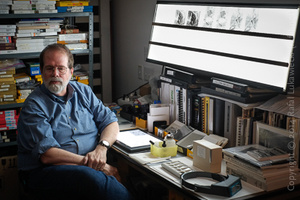

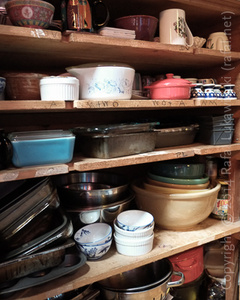
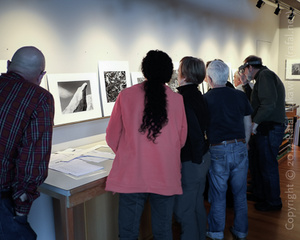
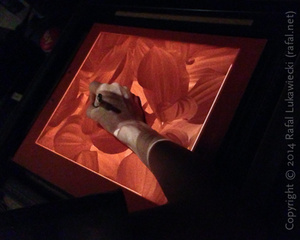
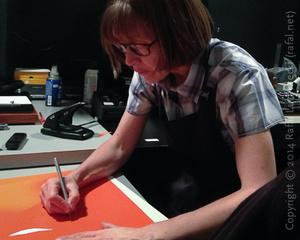
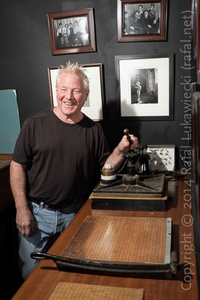
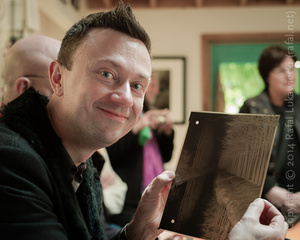
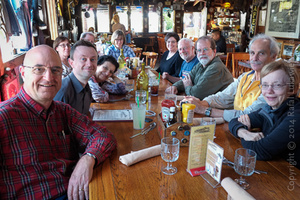


2 Responses to Fine Tuning the Expressive Print Workshop by John Sexton